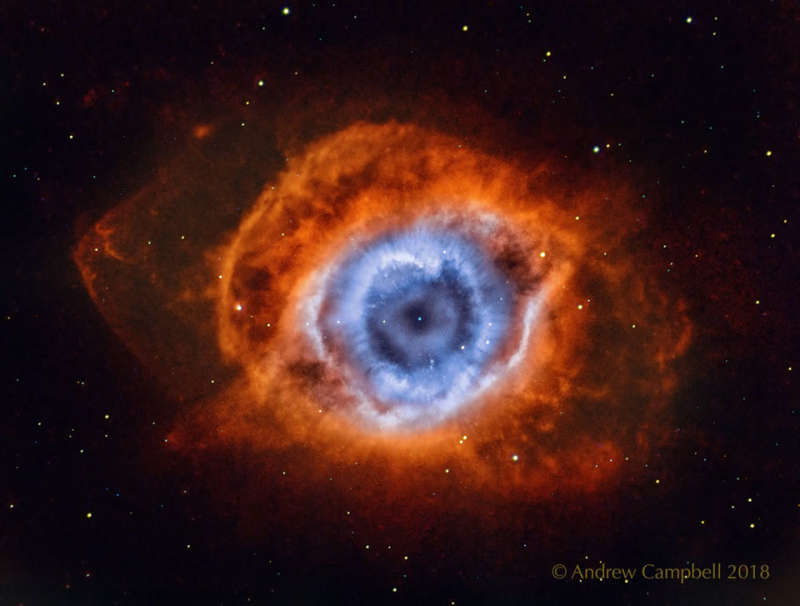
|
Credit & Copyright: Andrew Campbell
Explanation:
Is the Helix Nebula looking at you?
No, not in any biological sense, but it does look quite like an eye.
The Helix Nebula is so named because it also appears
that you are looking down the axis of a
helix.
In actuality, it is now understood to have a surprisingly
complex geometry, including radial filaments and extended
outer loops.
The Helix Nebula (aka NGC 7293) is one of brightest and closest examples of a
planetary nebula, a gas
cloud created at the end of the life of a Sun-like star.
The remnant central stellar core, destined to become a white dwarf star, glows in light so
energetic
it causes the previously expelled gas to
fluoresce.
The
featured picture,
taken in the light emitted by
oxygen (shown in blue) and
hydrogen (shown in red), was created from 74 hours of exposure over three months
from a small telescope in a backyard of suburban
Melbourne,
Australia.
A close-up of the
inner edge of the Helix Nebula
shows complex gas knots of
unknown origin.
|
January February March April May June July August September October November December |
| ||||||||||||||||||||||||||||||||||||||||||||||||
NASA Web Site Statements, Warnings, and Disclaimers
NASA Official: Jay Norris. Specific rights apply.
A service of: LHEA at NASA / GSFC
& Michigan Tech. U.
Based on Astronomy Picture
Of the Day
Publications with keywords: NGC 7293 - Helix Nebula - planetary nebula
Publications with words: NGC 7293 - Helix Nebula - planetary nebula
See also:
- APOD: 2025 August 31 Á NGC 7027: The Pillow Planetary Nebula
- APOD: 2025 August 22 Á A Tale of Two Nebulae
- APOD: 2025 August 5 Á NGC 6072: A Complex Planetary Nebula from Webb
- APOD: 2025 July 29 Á A Helix Nebula Deep Field
- APOD: 2025 July 13 Á Planetary Nebula Mz3: The Ant Nebula
- APOD: 2025 June 9 Á Between Scylla and Charybdis: A Double Cosmic Discovery
- APOD: 2025 May 14 Á NGC 1360: The Robins Egg Nebula
